
The Hermitage Artist Retreat Has Become an Incubator for Artists from Around the Country
At the lovely, secluded beachside spot on Manasota Key that is the Hermitage Artist Retreat, seabirds wheel, waves splash and white sand makes for peaceful strolls. It’s a haven for artists lucky enough to receive a residency there, and it’s also a place where locals can attend talks, performances and other events featuring those artists—often at little or no cost.
Things weren’t so peaceful on the campus in September, when Hurricane Ian struck the Hermitage and devastated much of the Englewood community. While most of the buildings on the campus remained standing after the storm, the hurricane caused significant damage to the property, and repairs are expected to cost more than $1 million.
That news reverberated far beyond Sarasota County’s beaches. Since the Hermitage’s founding about 20 years ago as a place where individual artists have the time and freedom to create, more than 600 makers of music, dance, theater, literature and visual art have found inspiration there. And the work they have done at the retreat has gone on to stages and museums around the world.
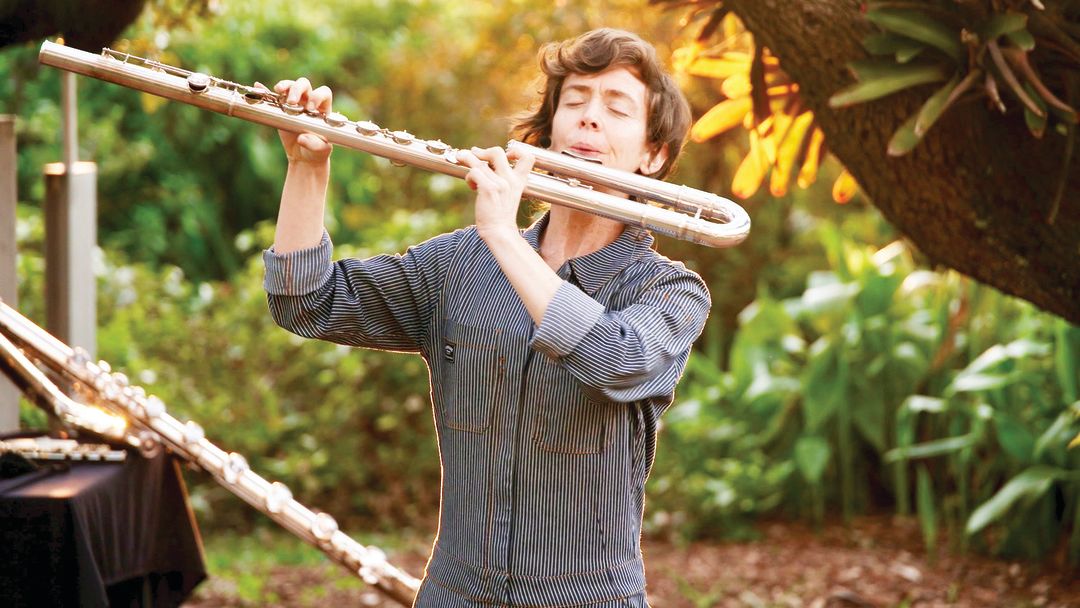
Flutist Claire Chase
Image: Courtesy Photo
Just a few examples: Playwrights Bess Wohl (Grand Horizons), Michael R. Jackson (A Strange Loop, White Girl in Danger) and Paula Vogel (How I Learned to Drive, The Mother Play); screenwriter Roberto Bentivegna (House of Gucci); composer Vijay Iyer (Bruits); flutist Claire Chase (Density 2036); and visual artists Trenton Doyle Hancock and Sanford Biggers are just a handful of the professionals who spent some of the most productive times of their careers at the Hermitage. (A quick peek at the Hermitage website reveals many more highly acclaimed names over the decades.)
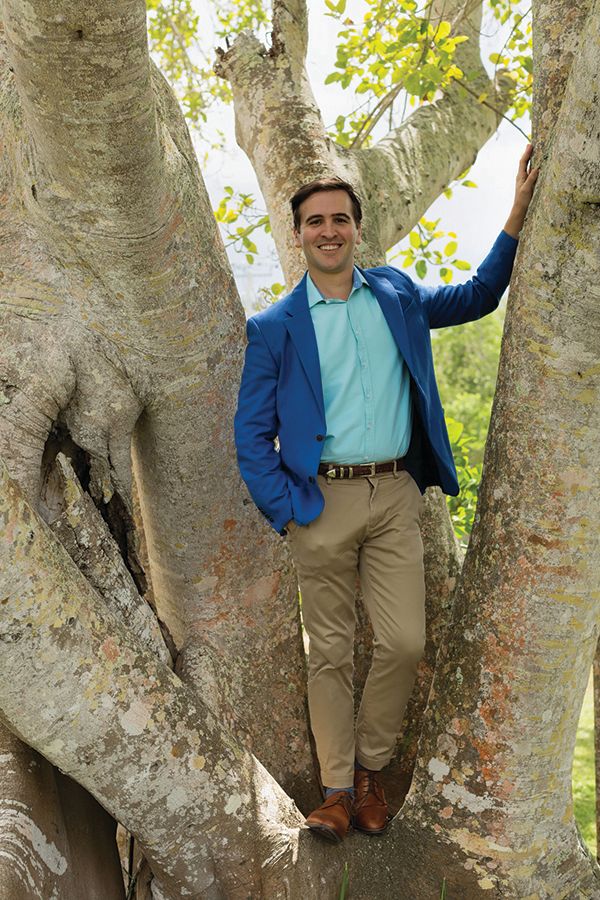
Image: Nancy Guth
Hermitage chief executive officer and artistic director Andy Sandberg, who has worked at the Hermitage since 2019, says the retreat typically hosts between 75 and 80 artists a year for varying lengths of time, adding up to four weeks each over two years. On average, five or six artists occupy the Old Florida historic cottages and homes of the site at any one time.
“It’s such a life-changing experience for them,” Sandberg says. “We need to tell their stories better. People see our programs here, but the work created here goes on to [be enjoyed by] hundreds and thousands, if not millions, of others.”
In order to tell those stories, the Hermitage is hiring a full-time alumni coordinator to add to a staff that has already blossomed in the past couple of years, with seven other employees besides Sandberg.
The journeys the artists embark on at the Hermitage “are quite epic,” Sandberg says. “Sometimes, the work doesn’t come to fruition for years.” But in the meantime, “they are part of our family and ambassadors to the world.”
Sandberg says the Hermitage experience is a “chance for an artist to try something out, sometimes for the first time, or in a new format.” Sometimes, it’s just easier to create in Sarasota than, say, New York or London.
Bess Wohl, for example, was unable to rehearse her new show, Camp Siegfried, elsewhere during the worst of the Covid-19 pandemic. But here, the Hermitage connected her with actors from Florida Studio Theatre with whom she was able to rehearse and workshop the show—which is now included in the upcoming season of New York’s Second Stage Theater.
Sandberg admits that some of the artists “have never heard of Sarasota” before they come here. “But they leave singing the song of Sarasota,” he says, especially after they collaborate with arts groups here. “There are a few hundred untold stories we don’t even know ourselves,” he adds.
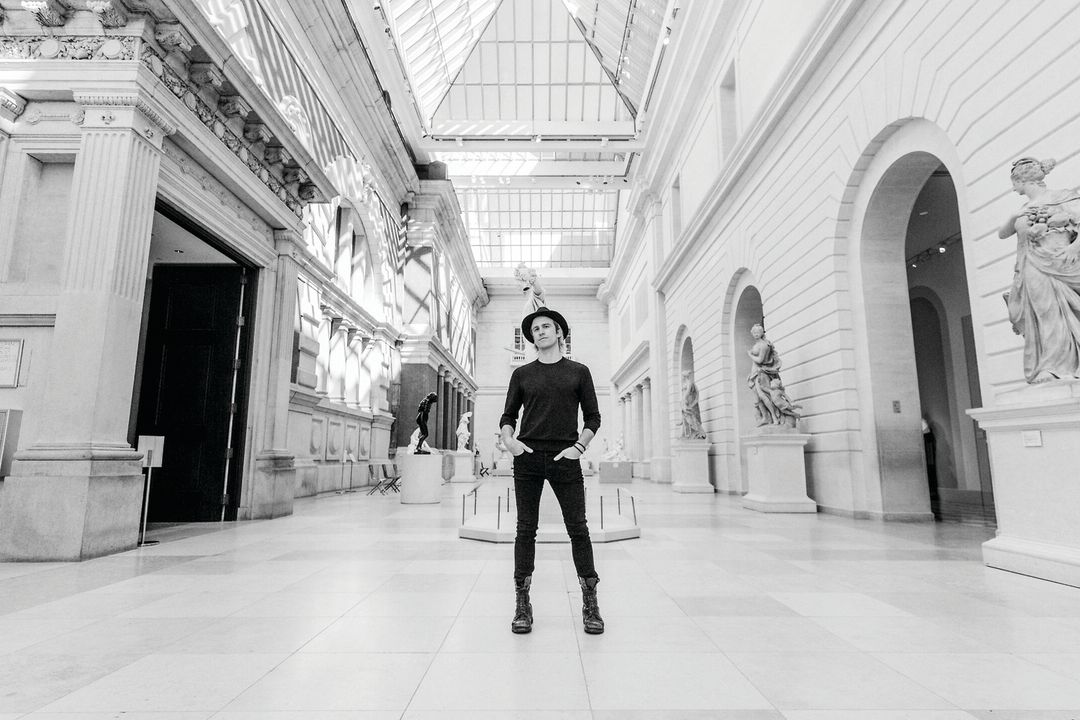
Tony Award winner Gavin Creel
Image: Courtesy Photo
One such story comes from Tony Award winner Gavin Creel (Hello Dolly!, Hair and, most recently, the revival of Into the Woods on Broadway). Creel was at the Hermitage to workshop and develop the original musical piece Walk on Through, a commission from the Metropolitan Museum of Art. This set the groundwork for Creel to get the piece to the next level at the Eugene O’Neill Festival, where, he says, “we tore it apart and built it back up.” He’s now ready for that piece to move on to a backers’ audition in New York City.
“It couldn’t have been ready [for that] without the Hermitage,” Creel says. But he spent the first of three weeks here last January, and says the place gave him “time, space and quiet” to work.
“When I’m in motion is when my ideas come in,” he says. “At the Hermitage, I walked five to nine miles every day on the beach in my bathing suit. The Hermitage gave me an unbelievable launching pad and permission to take risks.”
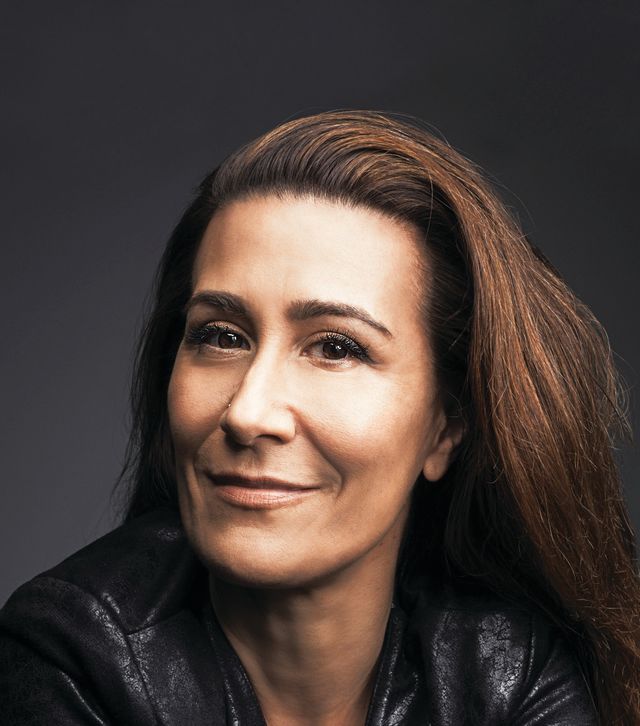
Jeanine Tesori
Image: Courtesy Photo
For composer Jeanine Tesori (Thoroughly Modern Millie, Fun Home), her stay at the Hermitage came when she was feeling blocked. “I hadn’t been able to write for weeks,” she says. “I was panicked and late with a deadline.” Then, “between the welcoming spirit of Andy and the staff, the community, the soothing sounds of the waves, I was finally able to put notes down.”
Tesori not only wrote a major portion of the second act for a musical version of George Brant’s play Grounded (due to premiere at Washington National Opera in 2023, before a production at the Met in 2025), she also wrote the end of the first act to the current Broadway musical Kimberly Akimbo while at the Hermitage. “It was a pivotal time for me, as I hear it has been for all artists who are lucky enough to spend time there,” she says.
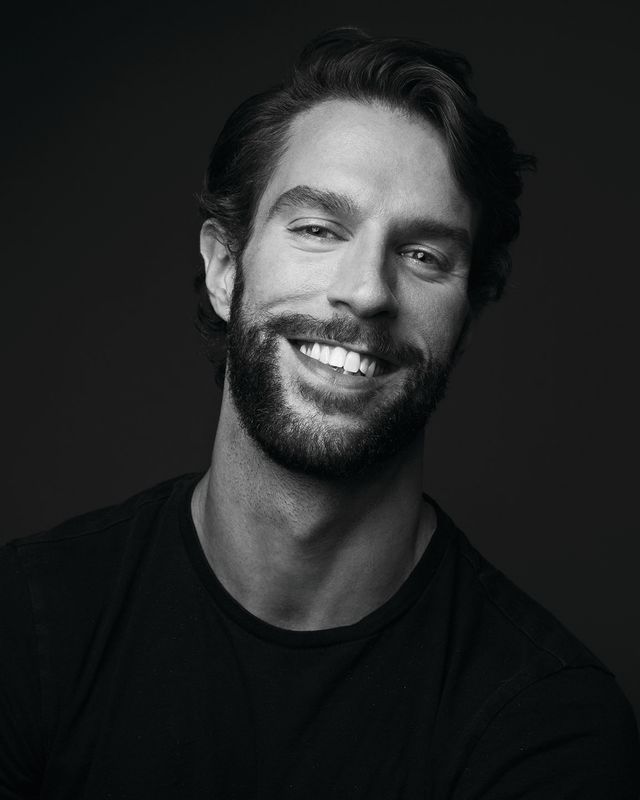
James Whiteside
Image: Courtesy Photo
American Ballet Theater dancer and choreographer James Whiteside spent two weeks at the Hermitage adapting his autobiographical book Center Center for the stage. “My time there was so productive, I ended up with drafts of two different plays,” he says. “Every morning I woke up, made coffee and started writing. I’d take a break to take a dip in the ocean and make meals, then I’d get right back to work. There were no distractions, and it was the perfect place to let the creative juices flow.” Besides all that, Whiteside was also able to take a ballet class every other day in a dance studio set up by the Hermitage staff. One version of Center Center, a solo dance piece, is intended for performance at Theatre Aspen soon.
“I can’t think of a better place to work on what I’m doing,” says visual artist Amanda Williams, who worked on preparatory sketches for the next iteration of her series What Black Is This, You Say? while in Englewood. The series began in 2020 during the pandemic lockdown as a response to media strategies raising awareness around racial injustice, such as Blackout Tuesday. Watercolors were a small, fast medium used as “placeholders” until Williams could return to the studio. A large-scale version of Williams’ project will be exhibited as part of Art Basel Miami Beach with Rhona Hoffman Gallery.
Williams was also impressed with the Hermitage’s Family Residency program, which provides babysitters for artists’ children during their stay. As a mother of young children, Williams thought residencies would never work for her. “For me, it was invaluable to have my family with me,” she says. “They had complete comfort here. That would be so much harder back in Chicago.”
“I think a lot of artists come, and here they unlock new ideas and possibilities,” says Sandberg. “Sometimes they do the work they came here to do really quickly, and then open their minds to start something new,” often with a multidisciplinary hybrid approach. “We’re the only major arts organization here devoted to creating new work, and we’re shining an international light.”